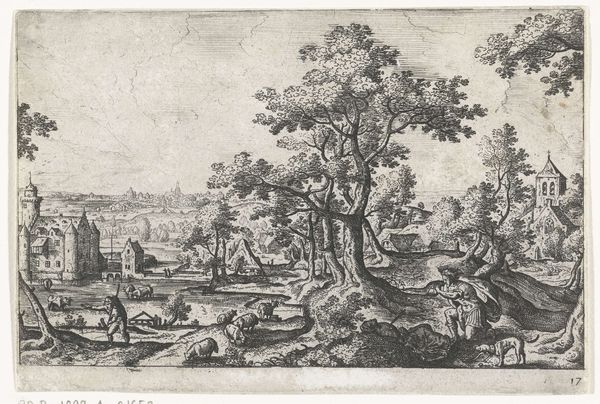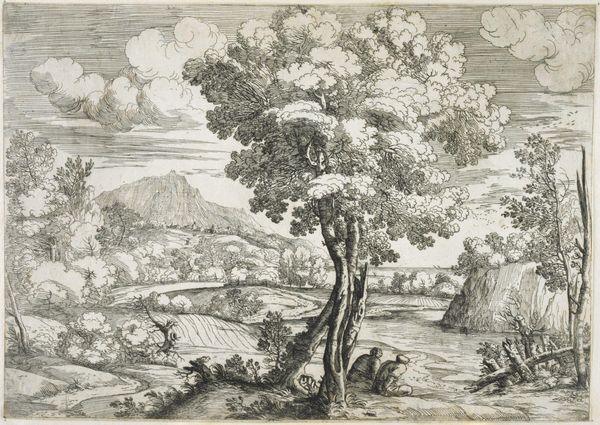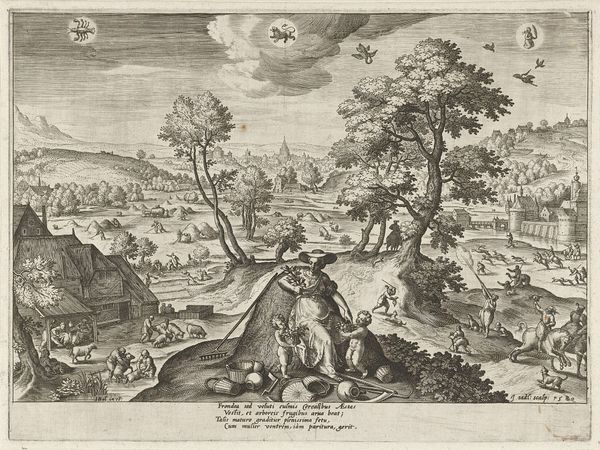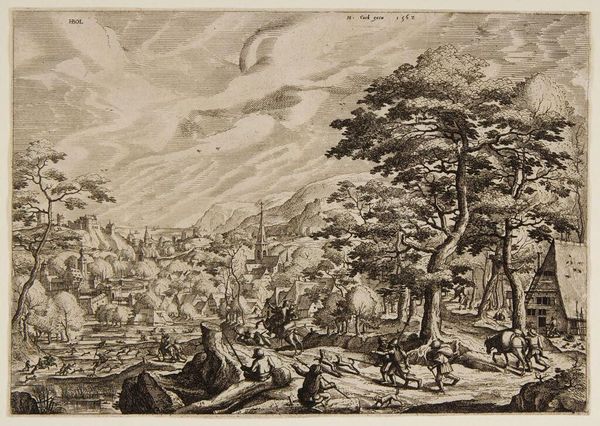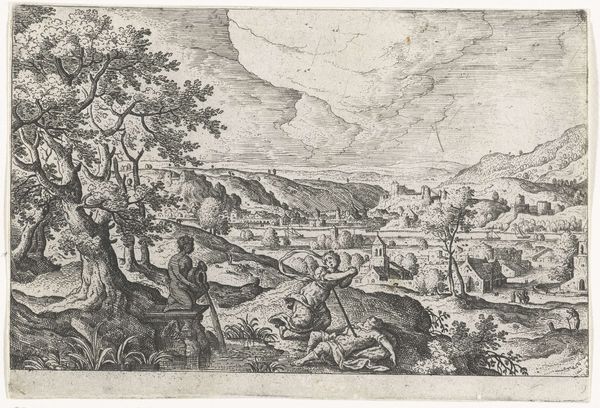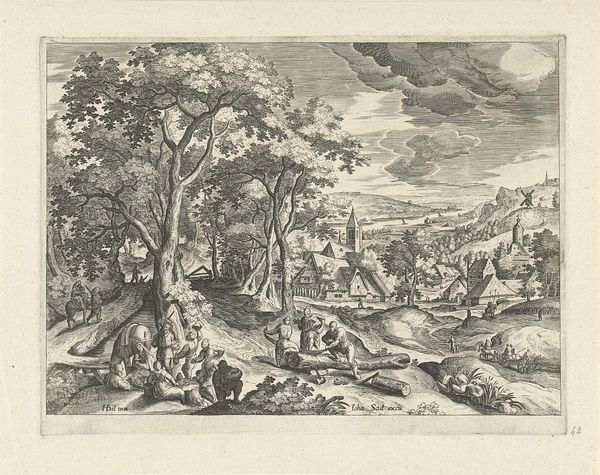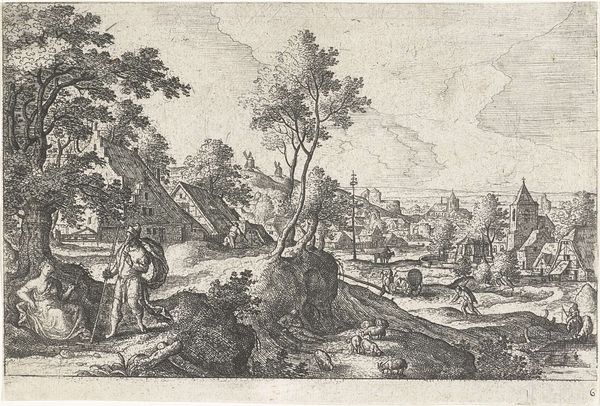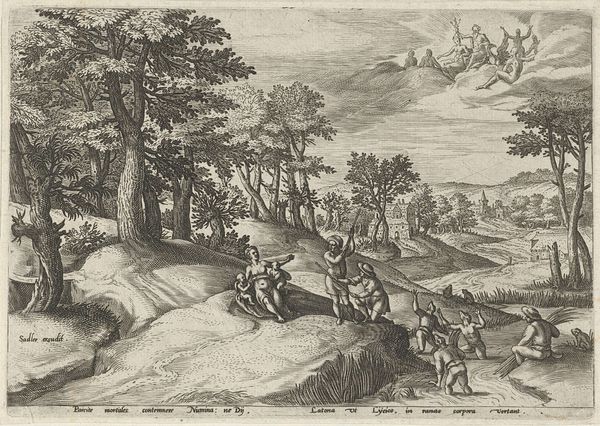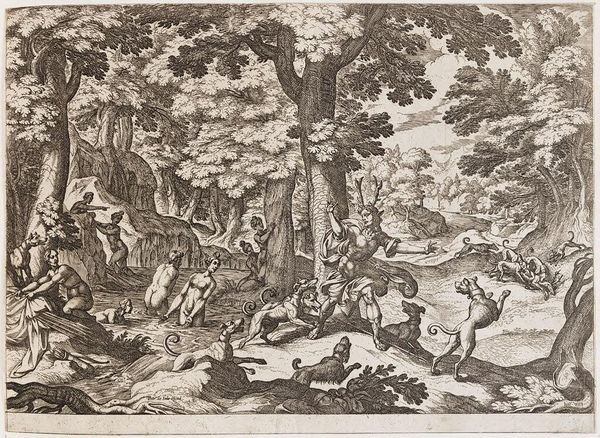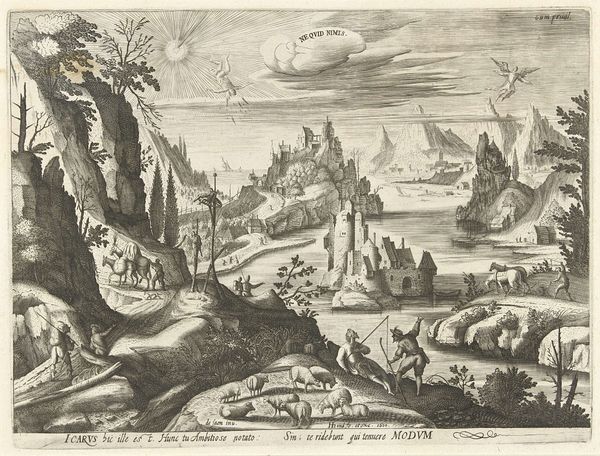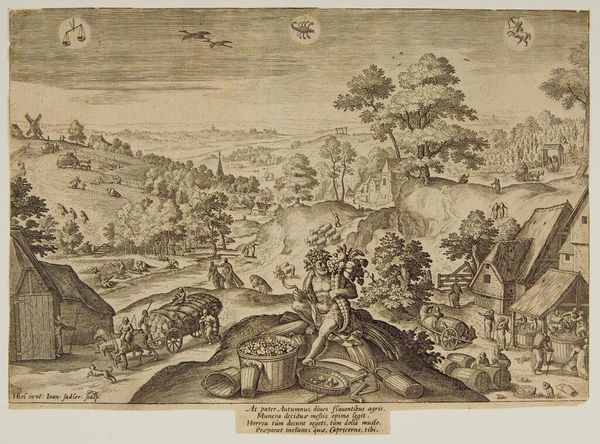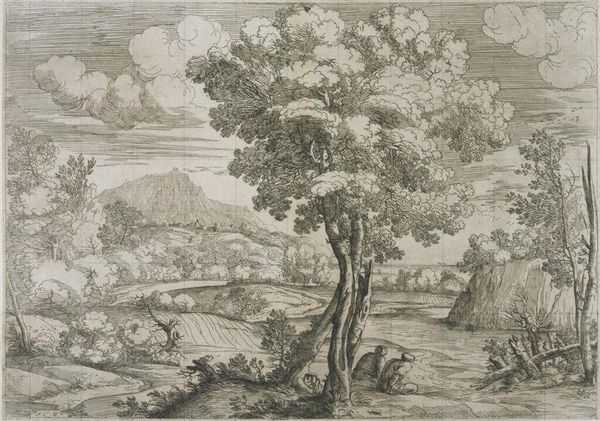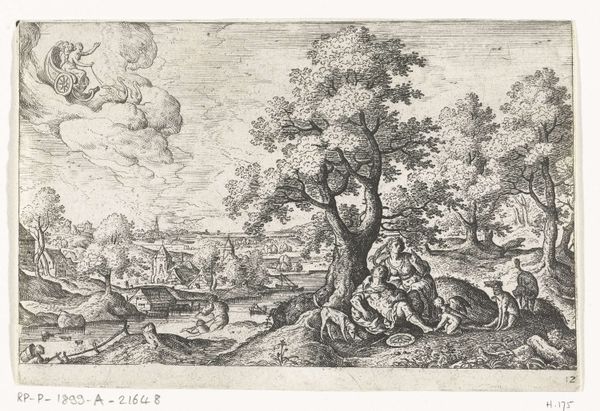
Four Landscapes with the Four Seasons 1534 - 1599
0:00
0:00
drawing, print
#
drawing
#
medieval
# print
#
landscape
#
figuration
#
form
#
line
#
realism
Copyright: Public Domain
Editor: Here we have Hendrick van Schoel's "Four Landscapes with the Four Seasons," likely created sometime between 1534 and 1599. It's currently held at the Metropolitan Museum of Art. I’m struck by the incredible detail in this print, almost like looking at a tapestry. What particularly grabs your attention? Curator: Well, placing this artwork within its historical and social context reveals fascinating layers. It is clearly trying to depict everyday life and link this to seasonal change. What is key here, and maybe easily overlooked, is to think about who was buying prints like this at the time? This would be affordable for a new rising class of merchants and minor aristocracy, who are gaining wealth, and defining their position through owning images, like the landscape, a view to which the landed gentry would claim exclusive rights! Does that thought resonate with you when viewing the print? Editor: It does! So, owning this print wasn't just about appreciating art but also making a social statement, a type of silent protest about class hierarchy. Curator: Exactly. Furthermore, look at how nature is represented, it isn't just scenery. The meticulous detail serves a purpose. By observing what people are wearing and their activities, we are offered insight into daily existence during a period of considerable transition. The seasonal labour acts, linked explicitly to images such as the sun or harvesting wheat, give visual meaning to the change in season and represent the rhythms of that society. Editor: It’s amazing how something that looks like just a pretty landscape can tell us so much about societal shifts and the politics of the time. I see now how van Schoel isn't just depicting seasons, but a society finding its place. Curator: Precisely, and perhaps it makes one think about today. Who controls imagery? Whose lives are documented and aestheticized for profit? It offers a lens into how art continues to participate in social discourse, wouldn’t you agree? Editor: Absolutely. I'll definitely view art with more questions from now on. Thanks for sharing your expertise.
Comments
No comments
Be the first to comment and join the conversation on the ultimate creative platform.
